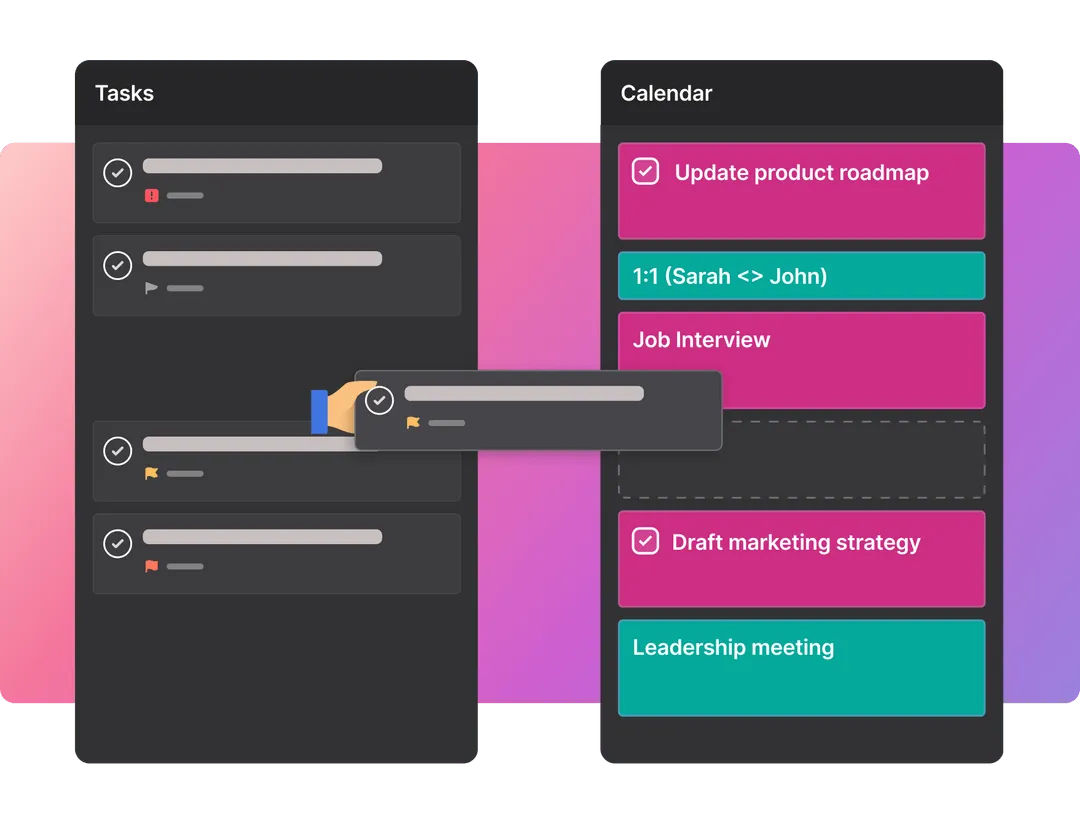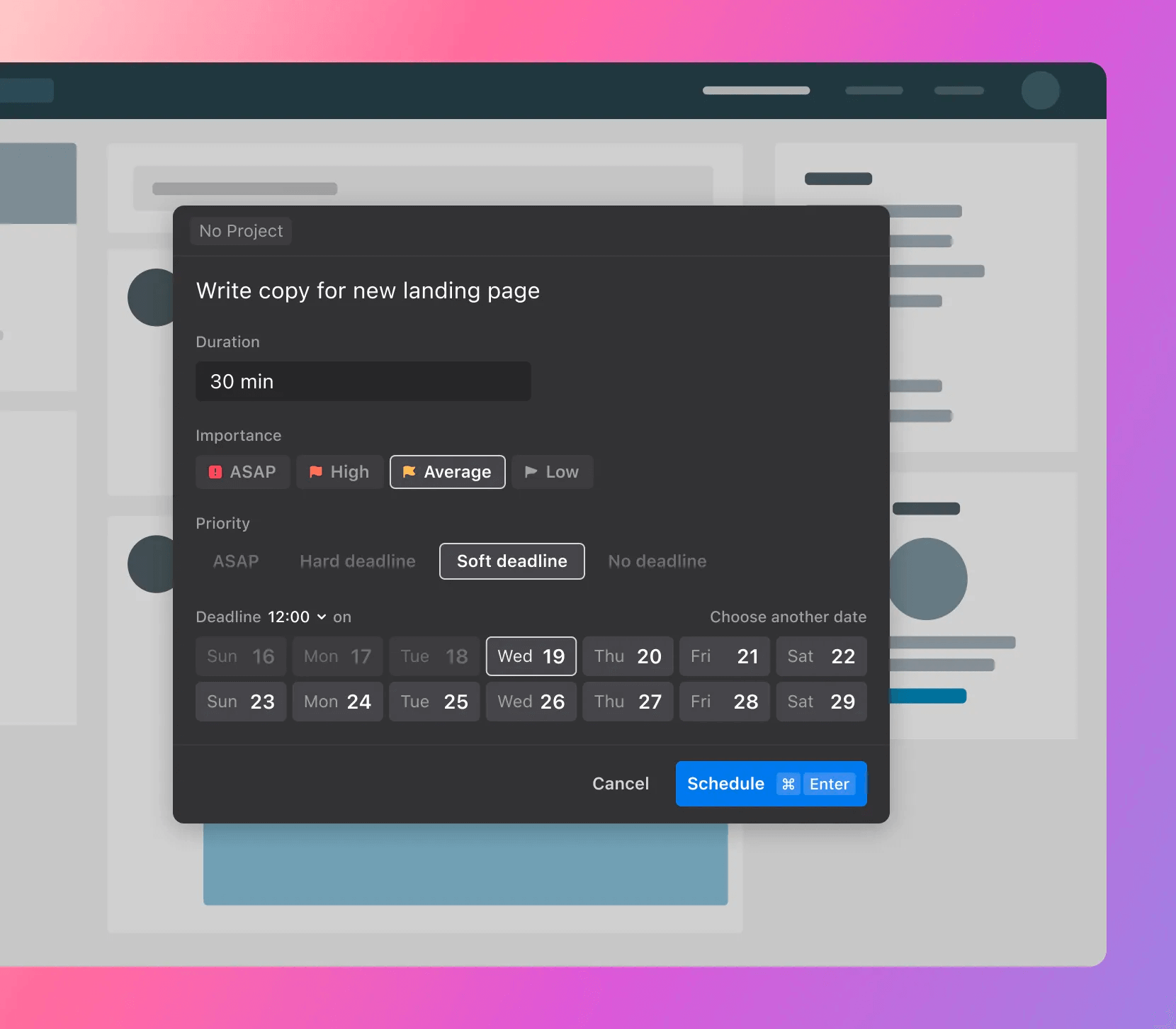Do you find yourself anxious about high costs and low profits?
Are you often worried that your business is not getting maximum returns from your resources?
If you answered “yes” to either of these questions, you’re definitely not alone. Many businesses face similar challenges when it comes to operational efficiency.
But fear not, because in this article, we will address these pain points head-on and present you with powerful solutions that can transform your operations for the better.
We’ll discuss what operational efficiency is, how to measure it, and, most importantly, how you can improve it in your business.
So prepare to unlock the secrets to operational efficiency — secrets that will revolutionize the way you work.
Let’s jump right in!
What is operational efficiency?
Operational efficiency refers to an organization’s ability to optimize its processes, resources, and activities for maximum productivity, effectiveness, and profitability. It involves utilizing resources optimally, minimizing waste, and reducing costs while improving overall business operations.
Achieving operational efficiency helps organizations enhance their competitiveness, customer satisfaction, and financial performance in a dynamic business environment.
If you’re ready to get started, you’ll need to do one thing first: decide on your key performance indicators (KPIs).
Chief marketing officers, vice presidents, directors, and marketing managers in 35 countries were asked about their measures of success in a 2022 survey. The top five KPIs in their businesses were revenue, customer satisfaction metrics, web and mobile analytics, marketing and sales funnels, and customer acquisition costs.
Having performance metrics is the foundation of operational efficiency, as it provides a benchmark against which efficiency gains — or lack thereof — can be evaluated.
When you can assess how effectively you’re meeting your business goals and objectives, you can improve your operational strategy by improving your processes and choosing the right productivity tools for your organization.
Efficiency vs. productivity
Efficiency and productivity are often confused. But they’re not the same thing. They are distinct business strategy concepts used to measure and assess performance.
Productivity is the quantity of output achieved per unit of input. Efficiency, on the other hand, focuses on the effectiveness of resource utilization.
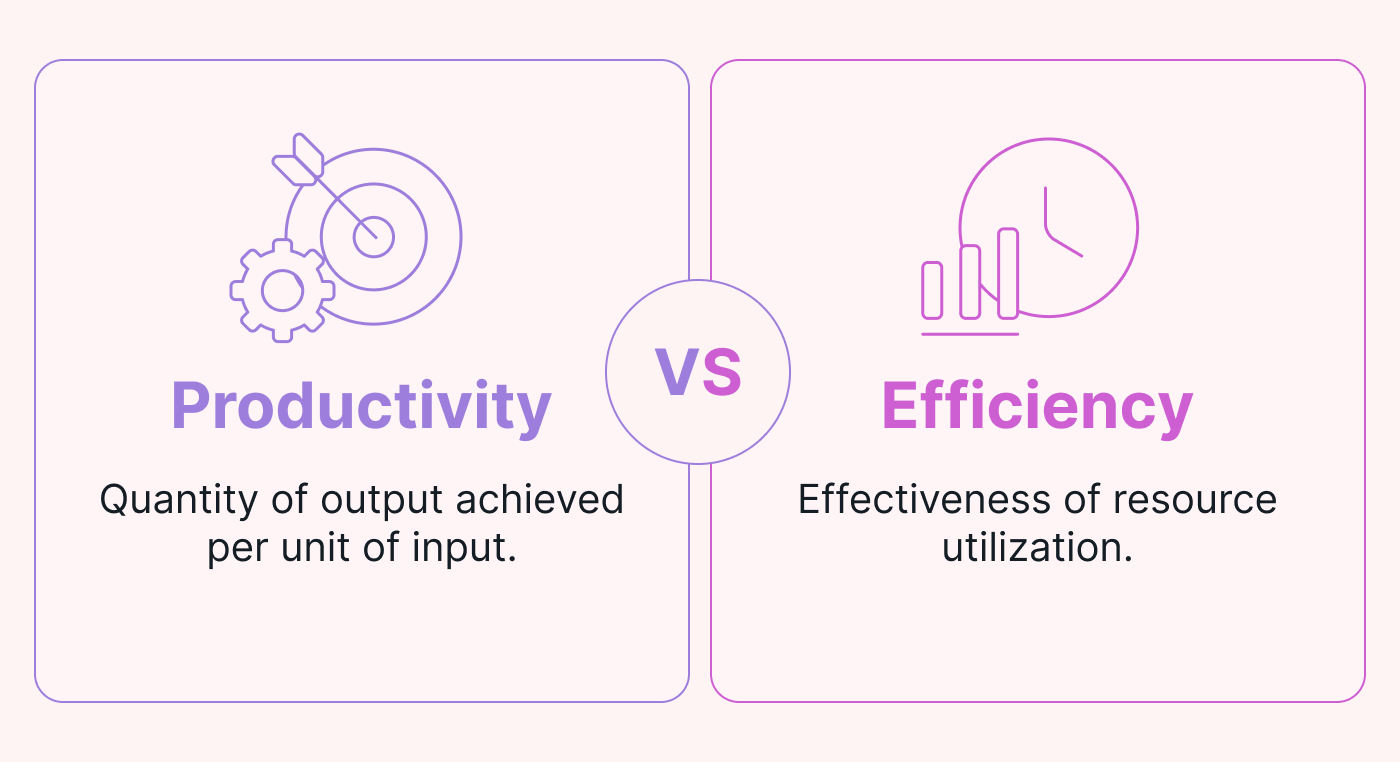 |
Let’s break down each term to better understand their differences.
Productivity measures the rate at which goods or services are produced per unit of input. For example, a factory that produces more widgets than — but uses the same resources as — another factory is considered more productive.
Conversely, efficiency focuses on how well resources are utilized to achieve a task, business goal, or objective.
A business process is considered efficient if it minimizes waste and operational expenses while maximizing output. For instance, a factory that produces the same number of widgets using fewer resources or operational expenses compared to another factory is considered more efficient.
A Harvard Business Review article succinctly summarizes the differences between these two terms: Productivity centers on achieving more results with the same amount of resources. Efficiency, on the other hand, focuses on achieving the same results with fewer resources and fewer business expenses.
How to measure operational efficiency
There’s no one-size-fits-all method when it comes to measuring operational efficiency. However, there are traditional formulas for operational efficiency you can refer to.
To measure operational efficiency, simply divide your operating expenses by your total revenue. For the operational efficiency ratio, divide the operating expenses by your total revenue, and multiply that number by 100.
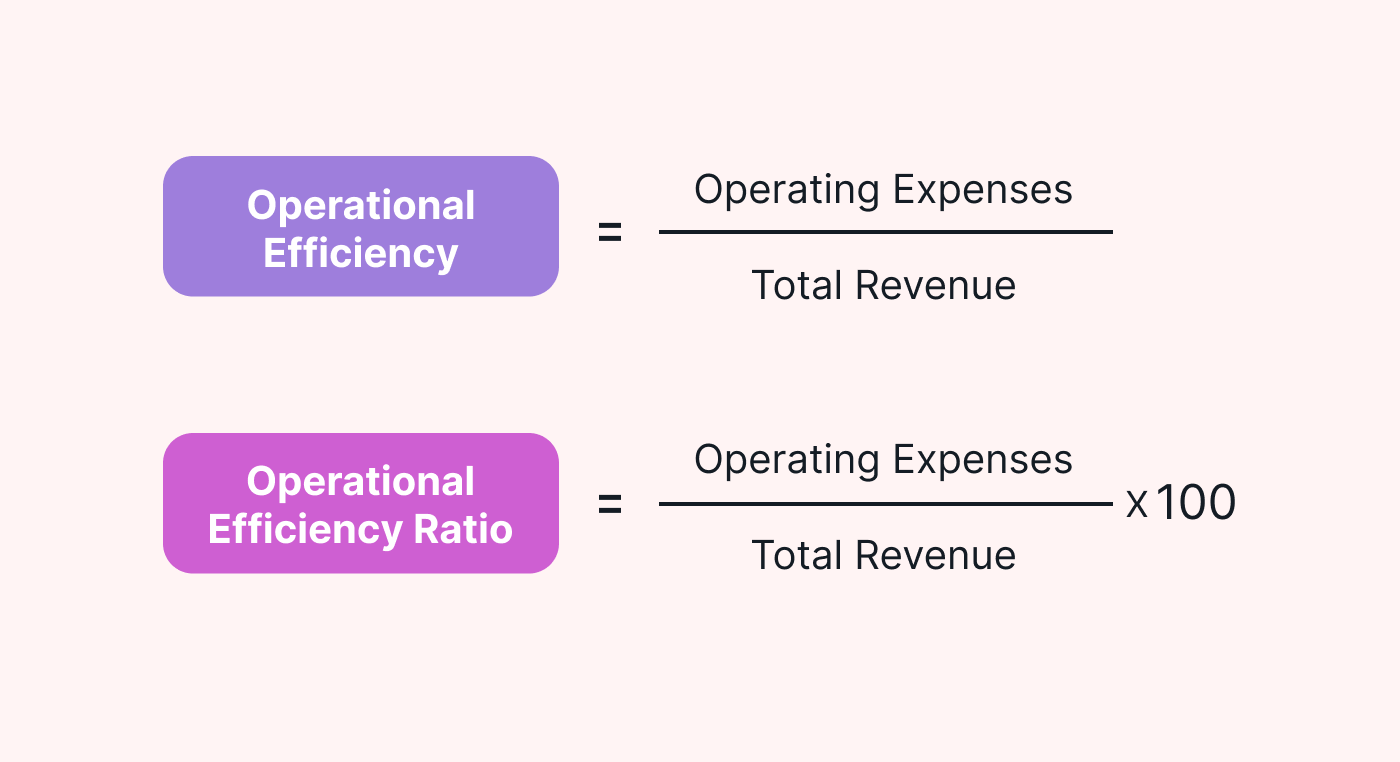 |
The lower your operational efficiency ratio, the higher your operational efficiency, and the more likely your business is sustainable.
However, this operational efficiency rate formula only looks at how much you’re spending to generate revenue. As a business owner, you’ll need to identify suitable output and input variables based on your KPIs.
Additionally, determining whether to improve efficiency right now depends on your business goals. Generally, efficiency should be improved to reduce wasted effort and resources and give you a strong foundation for growth.
How to improve operational efficiency
Here are the basic steps for improving your organization’s operational efficiency:
1. Record performance and set benchmarks
The first thing to do is to record your current performance metrics. These metrics can come from various areas, such as production, customer service, or financials.
This process allows you to spot patterns and trends that provide insights into your system’s overall health. It can also identify areas for improvement and pinpoint long-term goals to aspire for.
The next step is to set benchmarks or performance targets. Benchmarks are the desired levels of operational performance that business owners aim to achieve. These targets can be set based on industry standards, best practices, and ambitious yet achievable goals.
Setting benchmarks helps by:
- Providing a clear direction for improvement efforts
- Enabling clear comparisons against other industry players in terms of operating costs, resource allocation, and other performance indicators
- Motivating teams to strive for excellence — which includes better customer retention, improved customer satisfaction rates, and production of high-quality products
- Allowing for progress monitoring
Comparing current performance against established benchmarks helps organizations pinpoint gaps and opportunities for continuous improvement.
2. Identify and eliminate bottlenecks
Bottlenecks are points at which the flow of work is hindered or slowed down, resulting in delays and higher costs. To address them, you can start by mapping out the entire workflow in detail. Doing so will help identify each step, decision point, and task movement from one stage to another.
Once you pinpoint areas where work tends to get delayed, it’s time to determine the root cause of the bottleneck. What is causing it? Could it be an inefficient system for recording operating costs or, perhaps, a lack of automation in inventory management? Are there mismatches in capacity or limited resources?
Develop solutions for each bottleneck based on your process analysis. When dealing with multiple bottlenecks, try to address the most critical ones first for immediate efficiency gains.
3. Share information and emphasize employee training
Improving operational efficiency involves equipping your team with the skills and knowledge to perform their roles effectively.
It’s no surprise that many ventures are investing in employee training to beef up their business operations. In fact, workers spent approximately 64 hours on workplace development and learning activities in 2021. This number rose significantly from 35 in 2020.
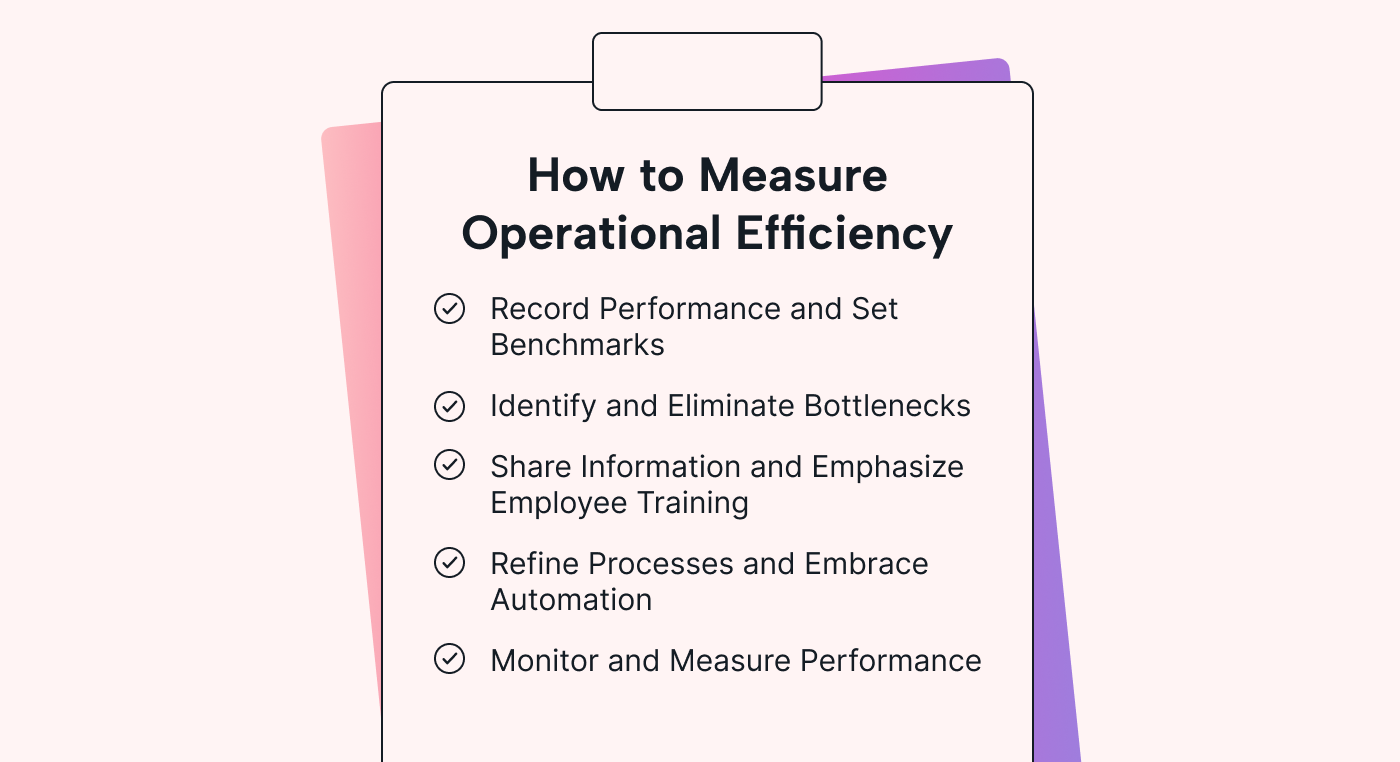 |
Aside from investing in training programs, it’s also vital to share relevant information, such as performance data, key objectives, and strategic plans, with your team. When your employees are aware of the bigger picture, they can align their efforts to support the company’s efficiency goals and overall mission. That said, it’s easier to improve operational efficiency when everyone is on board.
4. Refine processes and embrace automation
Process refinement allows ventures to pinpoint and avoid waste, such as redundant tasks, unnecessary steps, and non-value-added business activities. Streamlining processes helps you focus resources, time, and effort on activities that directly contribute to the desired outcomes.
Automating repeatable tasks is an effective strategy for streamlining systems, especially if it contributes to a positive employee experience. In fact, automation is most likely to be successful when driven by improving customers’ or employees’ experiences.
Automation technology can perform tasks faster and with greater precision than manual processes. Using automation software can help you significantly reduce processing times and minimize the risk of human error.
Automation can also help you optimize your use of resources, such as time, labor, and equipment. This means employees can focus on higher-value activities that require human creativity and problem-solving skills.
For example, a project-scheduling tool can place tasks on your calendar while considering priorities, deadlines, and availability. It can also help avoid back-and-forth emails and time zone confusion, eliminating manual planning that requires time and mental energy. As a result, the team can concentrate on more critical factors and stay on track to reach targets.
5. Monitor and measure performance
Continuous performance monitoring plays a pivotal role in sustaining operational efficiency. This involves tracking KPIs and evaluating progress against established benchmarks.
Regular monitoring sheds light on objective data, which can be used to inform decision-making rather than assumptions or intuitions. Real-time tracking also allows ventures to identify issues as they arise. Timely awareness of possible bottlenecks enables prompt intervention and minimizes disruptions to operations.
Regularly tracking metrics also allows business owners to optimize resource utilization, enhance customer satisfaction, and maintain a competitive edge in the market.
Improve your operational efficiency with Motion
Understanding the consequences of poor operational efficiency helps organizations identify areas for improvement and take proactive measures to address them. These measures include automating repeatable tasks by utilizing tools like Motion.
With its powerful automation capabilities, Motion offers a comprehensive solution for improving operational efficiency in various aspects of team collaboration and task management.
By automatically prioritizing tasks, resolving calendar conflicts, and providing real-time visibility into project progress, Motion empowers teams to work more efficiently and effectively.
Motion eliminates the need for manual planning and tracking through features like daily planner automation, task prioritization, rescheduling, and deadline reminders. These tools enable teams to focus on meaningful work without risking missed deadlines.
Take advantage of Motion’s free trial to see for yourself how it can help you improve your business’s operational efficiency.


